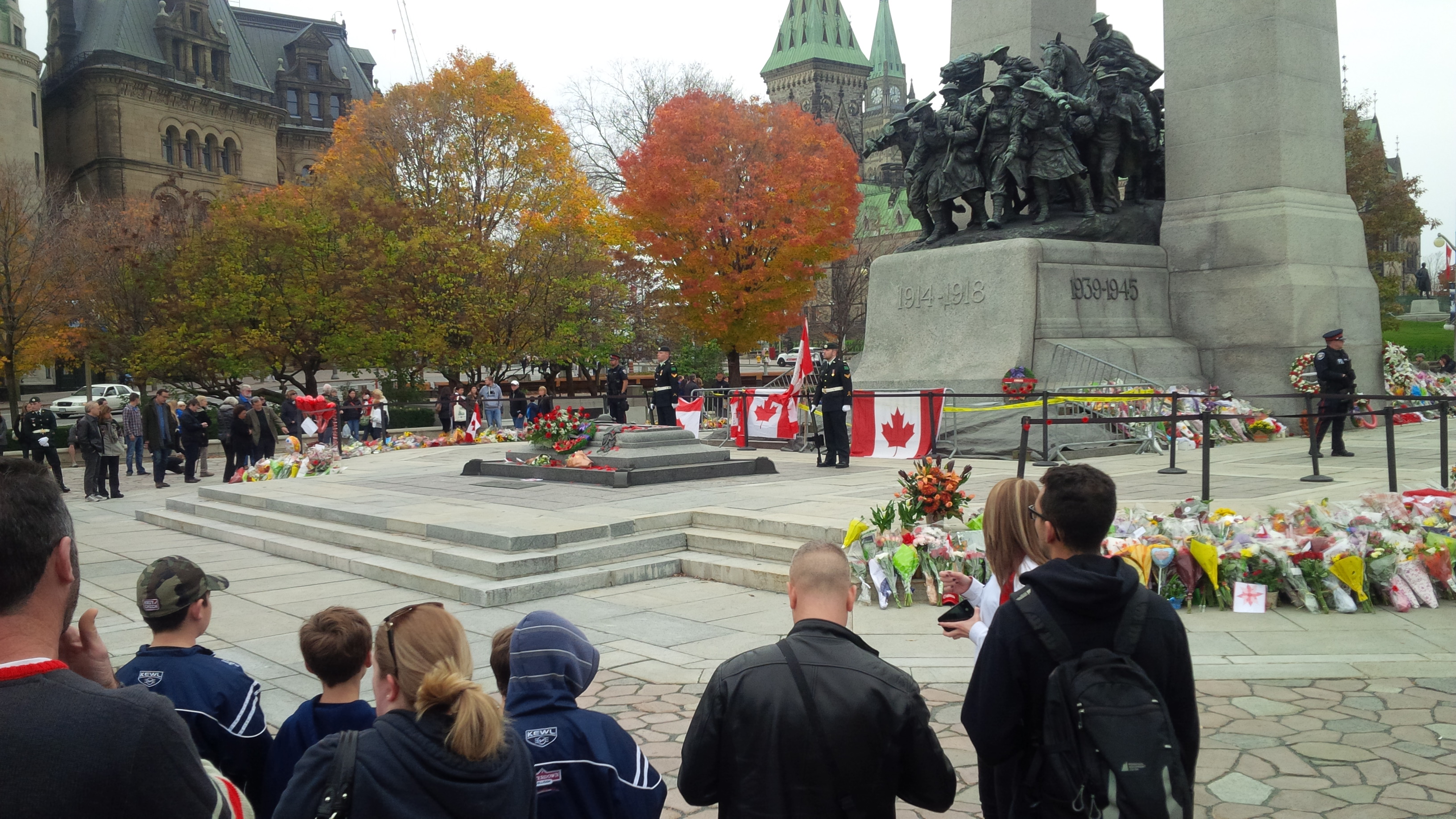October 27, 2014
New measures needed for Parliament Hill
By

New measures for Parliament Hill
It is clear that we need to be beefing up security on Parliament Hill, for this reason: If one troubled individual can get through the lines of security that currently exist, imagine what could happen if there was an attack by an organized group of assailants. At the same time there is a clear view that we need to be balanced in our approach and not go overboard. And we don’t necessarily need new laws.
Michael Zihaf-Bibeau, didn’t need to drive onto the Hill, which is what the barriers around the gates are supposed to prevent. He just ran on at a good speed. Then he commandeered one of a few ministerial limousines that hand around the East Block and dashed up the driveway, running through the barrage of security guards outside and inside the doors, flashing his long gun, and firing it off once when one guard tried to tackle him, shooting him in the foot. It has been said often that he could have done a lot more damage had he opened one of those caucus doors.
The issue about Parliament Hill is not just about keeping 308 Canadians safe. Parliament Hill is the core of our system of government and we have to secure it from random or organized acts of violence.
Many have found it confounding that a man with a visible long gun can make it through the front door confounding, but as retired senior police member explained to me, the system works to stop the average person trying to get it. It is not set up to prevent assailants with ammunition. And that is even more confounding.
So here are some ideas that relate to physical layout of Parliament Hill – and the National War Memorial, with the possibility in mind that the next attack may be a highly organized one with several assailants involved.
First the principles:
– Implement an approach that balances the need for security with the necessity that Canadians can access the Hill
– Aesthetics of our national building (we could have large cages in front of each door, that would be very effective). Blend in new structures with the architecture as much as possible.
– Privacy of tourists and others who just want to enjoy the Hill,
– Have a balance of visible security measures with hidden and more subtle ones. Each serve their own purpose.
– Measures can be instituted to slow down one’s entry. While it is already slow to get into buildings and in the cause for many complaints, the process can be more efficient, with a strategic approach to building in delays for all – especially those with ammunition.
Here are the main steps we could take:
1. Evaluate the gates and entry points. Do we need some mechanism to slow down entry, perhaps with turnstiles at each gate with a guard present, either at all times of some or sporadically? A lot of effort has been made with regard to automobiles entering the Hill. Now we need to focus on individuals entering the area, as well as what happens to the cars once they are on the Parliamentary precinct.
2. Review the movement of automobiles on the Hill. Should they be running at the front of the grounds, or should they use the parking area elsewhere, and does that make any different? What about the other cars that park on the Hill? If a hijacked car on the Hill can be used to hasten movement by assailants, or as a weapon itself, do we need to limit their availability to assailants?
3. Should there be barriers of some kind along the drive way up the Hill, to slow down traffic?
4. The doors – how do we have more effective barriers? Clearly, one person with a gun was able to get in. We need to prevent that, and certainly prevent a more organized determined attack. Several federal buildings use electronically controlled gates which have a metal base three feet high and another three feet of apparent bullet proof glass. May be there should be a series of two gates, and people have to wait between the first and second gate. Alternately there could be a subtle barrier around each door, which requires a slowed down entry.
5. It’s important to have security measures around the main doors as well as all side and back doors.
6. The system works well for your M. et Mme. Tout le Monde. That does not need tightening up and it is quite the hassle already. It’s the guys with the guns that we have to focus on.
7. Generally, security has to be tighter when there are reasons for concern…..such as when we go to war, even if it’s somewhere far away.
And the National War Memorial
The soldiers who are there are to be “on guard” at the site. But there are three problems about how we do that. They have guns that do not have bullets and they stand stoic with a downward gaze on one spot. It is more a posture of mourning than on guard. And there are two guards looking south down Elgin Street while the rear of the monument (facing north to Wellington Street where Zihaf-Bibeau approached from) is left unguarded. The solutions lie in the following:
– Consider having four guards, on duty, one for each corner
– Consider having an additional one or two police officers who are actually on guard and can look around and walk around.



